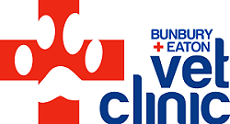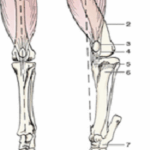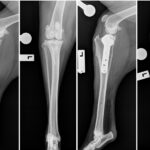
A normal larynx

Larynx of a brachycephalic dog where surgery was delayed too long.
Two weeks ago, I performed surgery on a brachycephalic (short-faced) dog to improve it’s breathing. I shortened the soft palate, removed the laryngeal saccules, and opened the nostrils. The surgery went well, and I expected a great result. Two weeks later, the dog was still struggling to breathe normally so we anaesthetised the dog again to examine the throat.
Unfortunately, the dog was suffering from laryngeal collapse.
What is laryngeal collapse?
Laryngeal collapse is a problem which can develop over time in brachycephalic dogs. Because of the amount of suction it requires for these dogs to breathe in, the cartilage of the larynx becomes weakened and starts to get sucked into the airway.
Why operate early?
Apart from simply improving the dog’s breathing and therefore quality of life, early surgery for brachycephalic dogs helps prevent a lot of secondary changes. These changes include laryngeal collapse, thickening of the tissues at the back of the throat, hiatal hernias (where part of the stomach gets “sucked up” into the oesophagus because the dog needs to suck so hard to breathe in), and laryngeal saccule eversion.
We most often see these dogs coming in for surgery between 3 and 6 years of age. This is when the secondary changes are starting to occur, which means the dog’s breathing is getting gradually worse. While some of these changes can be reversed with surgery, some become permanent and therefore continue to affect the dog for the rest of its life. Early surgery means we can prevent these secondary problems from forming, giving a better long term outcome.
How do you know if your dog needs brachycephalic surgery?
If you find your dog snores a lot, makes a harsh rasping sound when they breathe in, needs to breathe through their mouth when resting, can’t exercise as much as a “normal” dog, or has very narrow nostrils, they may benefit from surgery.
You can also perform the BRACHYCEPHALIC CHALLENGE, where you see if your dog can walk 400m in 10 minutes. 400m is roughly once around a footy oval, so on a cool day take your dog for a walk and see if it can do one lap in 10 minutes. If it can’t, you need to have it assessed by a vet.
Isn’t it normal for a pug to breathe like that?
Too often we hear owners say “that breathing is normal for a Pug/French Bulldog”. That may, unfortunately, be true, but it doesn’t mean that the dog is not struggling to breathe. Owners also might say that they just don’t exercise their dog because it “runs out of breath”.
Try blocking your nose then putting two drinking straws in your mouth. You will probably find that you can just breathe well enough to manage when you’re not doing much. Now try going for a walk around the block. It won’t take long before you start struggling to get enough oxygen. Imagine living your life like that. I made a short video, WHICH YOU CAN SEE HERE, showing just what life with brachycephalic obstructive airway disease would be like.
I know that not all brachycephalic dogs are affected, and there are some very good examples of the breed out there. The message that I’m trying to get across is that if your dog is affected, please give us a call and we can help improve their quality of life. But please do it early to get the best results.
Dr Braden has an interest in treating Brachycephalic Obstructive Airway Disease. Appointments can be booked at the Eaton Vet Clinic with Dr Braden on 97250399 or through our online booking service.


